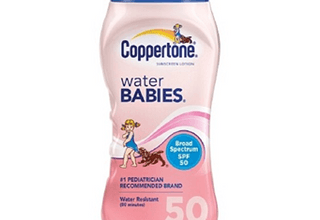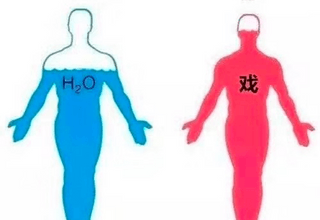
[Yamik Open Course | Live Content (9)] Sunscreen and Whitening (Physical and Chemical Sunscreen)
【Yami Open Class|Live Content (9)】
Lesson 3: Sunscreen Whitening (Physical, Chemical Sunscreen)
------------- -----
“We have done these days What???”
Before, we shared a lot of dry skin care products of [Yan An Tang] in the sun list
9From September 26th to September 29th, [Yan An Tang] was brought to the WeChat group of Yami Skin Care Open Class
1 hour a day The most scientific skin care basics
Full of dry goods
The editor of Yami will organize the content of the live broadcast and share it with those who are too late to listen to the live broadcast~
---The main topic is coming---
After understanding these values, how can I further choose a sunscreen product suitable for my skin? Here we will talk about sunscreen agents, which are also sunscreens. The most important part of a product.
Sunscreens generally fall into two categories: physical sunscreens and chemical sunscreens.

There are generally two types of sunscreens for physical sunscreens, namely titanium dioxide (titanium dioxide) and zinc oxide. First of all, they are two minerals, not It dissolves but is suspended in the sunscreen as particles.
The effect of titanium dioxide and zinc oxide on ultraviolet rays is not to rebound but to absorb. They have a strong mineral structure, after absorbing ultraviolet rays, their own It will not be damaged in any way, and the energy conversion will be released in the form of electromagnetic waves that are harmless.
Chemical sunscreen is a situation that kills one thousand enemies and destroys eight hundred. It will also happen by itself after it absorbs ultraviolet rays and converts them into release. Degradation.
Therefore, physical sunscreen has the following advantages over chemical sunscreen.< /p>
First, physical sunscreens are very stable, which has an advantage in reducing reapplication. Second, physical sunscreens are milder and It is in an insoluble state, so it is unlikely to penetrate our skin barrier and enter the body to cause irritation. At the same time, what are the disadvantages it brings? For example, titanium dioxide can reflect a lot of visible light, so it looks very white (it is the largest The use of scale is mainly in the paint we paint the walls). So with these physical sunscreen products, the face appears very white and looks very unnatural. p>
In addition, physical sunscreens are easy to rub, because they contain powders and solids. Also, their water resistance is relatively poor, and it is easy to It is not washed evenly. If you sweat, it is easy to form strips and become uneven. Therefore, you need to reapply after sweating a lot with these products. p>
Chemical sunscreens are basically the opposite of physical sunscreens. Most of them are oily or water-soluble, so they won't turn white or muddy. .Since most of them are oily, it will also have better water resistance.
The disadvantage is that chemical sunscreens will photodegrade after absorbing ultraviolet rays, which is unstable. Therefore, it needs to be reapplied after a period of time, otherwise it cannot be Acts as a sunscreen. The general idea is to reapply every two hours.
The larger molecules of some chemical sunscreens do not easily penetrate the skin, while some chemical sunscreens with small molecules can easily enter the skin , causing irritation to the skin.
After talking about the advantages and disadvantages of physical and chemical sunscreens, let's Look at the different sunscreens in detail.
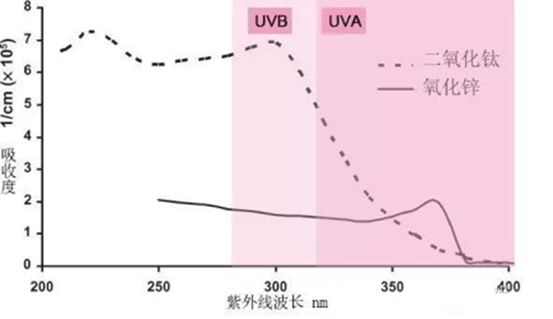
First look at physical sunscreens, titanium dioxide (titanium dioxide) and zinc oxide. The above picture shows the absorption of ultraviolet rays by the two substances. Titanium dioxide The absorption is mainly UVB, yesUVB has stronger defense. Zinc oxide is relatively resistant to UVA absorbs better, while UVB span>There is also a certain amount of absorption, which is relatively average. Therefore, if a pure physical sunscreen product only uses titanium dioxide, then its PAwill not be very high, and the tanning ability is not good.
Someone will ask, Su Yan cream orBBThe formula of the cream also contains titanium dioxide, so is it enough to use them for sun protection? p>
The answer is no.
Theoretically, if you make the particles nano-scale (visible light can be bypassed), it will appear transparent. So, For the titanium dioxide used in sunscreen products, relatively small particles are generally used, and we hope that the smaller the particles, the better, so that the sunscreen will not appear white.
No Tone Cream works to whiten your skin.BBThe cream has different colors, but titanium dioxide is also added first (equivalent to needing to paint on white paper). The particle size of titanium dioxide in them It is very large, because the bigger it is, the easier it is to cover and white. The titanium dioxide content is actually very low. If the product used contains 1% The large particles of titanium dioxide can already make the face very white. For sun protection, we may add the content of titanium dioxide to 5%-6%, or even 10%-20%. So, no makeup cream and BB The amount of titanium dioxide in the cream is not sufficient for sun protection.
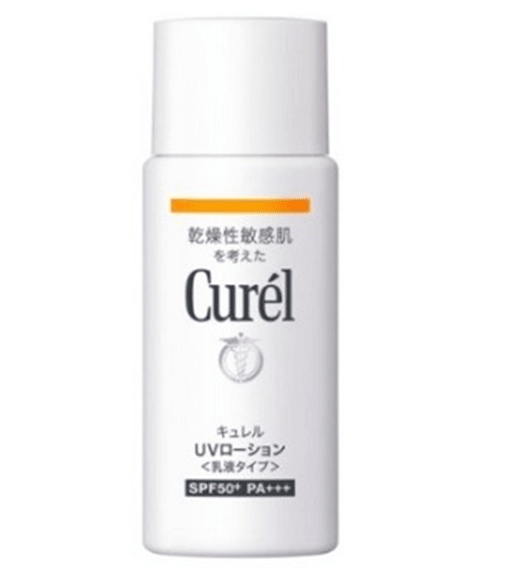
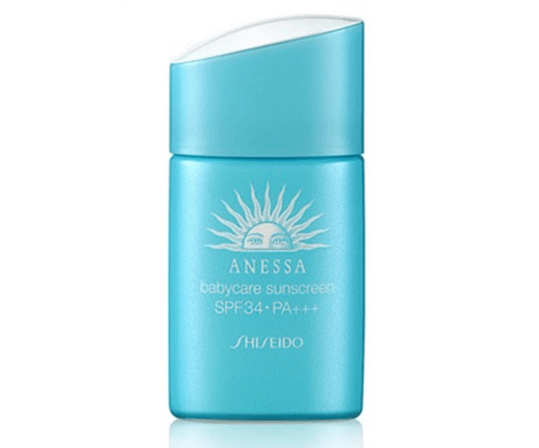

Here I will show you two examples, the sunscreen for sensitive skin and the small blue bottle for sunscreen Sensitive skin and children's sunscreen have greater requirements for mildness, so pure physical sunscreen is generally used. Here you can see that the sunscreens contained in these two types are only titanium dioxide and zinc oxide. Of course, some people complain These two types are too white to be applied on the face. Here is an example for everyone.
Next, I want to talk about chemical sunscreens that are more commonly used now.
There are fewer choices of physical sunscreens, and it is more difficult to achieve higher SPFvalue. And chemical sunscreens can do itSPF50 evenSPF100.
So how to choose a chemical sunscreen that is suitable for our skin? Here are mainly divided into preventionUVAand antiUVBTwo.
AntiUVBChemical sunscreens are more common and have better stability. Anti-UVAUVASunscreens are usually not very stable to light. The first one used is butylmethoxydibenzoylmethane in the picture, usually we call it avobenzoneAvobenzone, it is a common anti-UVA span> sunscreen.
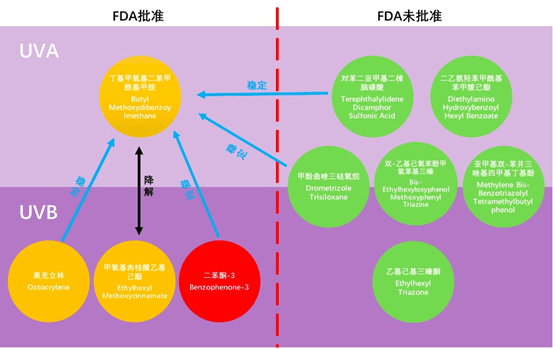
At that time, for anti-UVAFew sunscreen options. Avobenzone absorbsUVA is very strong, but its biggest problem is that it is very unstable, which is what we call dead. It absorbsUVABut it will be degraded very quickly. To maintain its stability, the most used products are ocrelline and dipendone span>-3, these two ingredients can help avobenzone degrade less quickly So, everyone should pay attention that if the product only contains avobenzone without the ingredients that help it stabilize, this means that this sunscreen product needs to be reapplied frequently.< /span>
Another thing to be careful about is that there is another commonly used UVBSunscreen - ethylhexyl methoxycinnamate. This ingredient and avobenzone can promote the decomposition. Therefore, Be very careful if you have a product that uses both ingredients at the same time, it will degrade very quickly and require frequent reapplications. Of course, product design will try to avoid both ingredients at the same time.< /span>
Here I will talk about why European and Asian sunscreens are more recommended.< /span>
We can see that the left side of the red line in the picture is the United StatesFDAapproved older ingredients, newer unapproved ingredients on the right (the US considers sunscreens to be drugs, so be cautious). Colors The distinction represents the degree of irritation of the ingredients to the skin. Red means very irritating, yellow means irritation to be considered, and green means milder.
This is especially emphasized, benzophenone-3 span>It is recognized by many studies as the most likely ingredient in sunscreens to cause contact dermatitis. It is recommended that you try to avoid choosing sunscreen products that contain this ingredient. Since there are only a few ingredients that can be selected for sunscreen products in the United States, in order to have a higher SPFvalue, choose to use dibenone-3Yes Very common.
In Europe and China, this sunscreen has been avoided as much as possible.< /span>
And then about several other yellow ingredients, such as avobenzone, which itself is very mild to the skin. But the decomposition after decomposition A product that may irritate the skin. Oakleyline is also mild, but studies have shown that when it breaks down, it releases oxygen free radicals, which may also irritate the skin. span>
The problem with ethylhexyl methoxycinnamate is that it is very permeable, and studies have shown that it affects hormones in the body . However, this study is an experiment on animals, and it used a very high dose. Therefore, about the raw material of ethylhexyl methoxycinnamate, governments all over the world consider it safe. There are opinions on the Internet that pregnant women should pay attention Avoid sunscreens containing this ingredient, for fear of affecting the fetus. The root cause is also from this experiment. If you have this concern, you can avoid it, but in fact, this ingredient is very commonly used.
The right side of the picture is relatively mild, and now we use Get more sunscreen. They are gentler on the skin and more stable to light. But none of these are approved in the US. Among them, terephthalmethylene dicamphorsulfonic acid and trozole trisiloxane are patented by L'Oreal. It is also specifically designed to stabilize avobenzone.
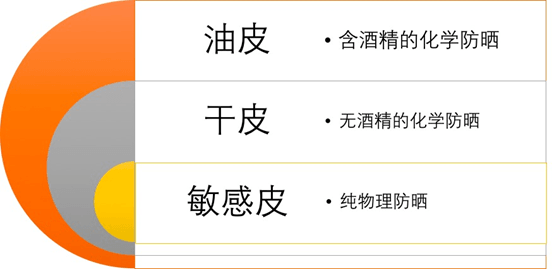
Sunscreen products contain other ingredients besides sunscreen.< /p>
Sunscreens (especially chemical ones) contain a lot of oil , the skin feels bad and more greasy. Therefore, in order to adjust the skin feel of the product, other ingredients are added to the product. One of the products I like to add is alcohol (especially Japanese sunscreen products). Friends with oily skin have a better skin barrier and can use alcohol-containing products. If you have dry skin, try to choose an alcohol-free chemical sunscreen. Sensitive skin is best to use pure physical sunscreen. Chemical sunscreens may also be considered if they only contain ingredients in green.
(To be continued...)
-------------- ----
[I heard that it only takes 0.01s to like]
Like live content with a flick of a finger.
On October 20th, Yan An Tang will pick one friend from all the likes
"Yan An Tang's Exclusive Skin Care Report"
 Show Original
Show Original
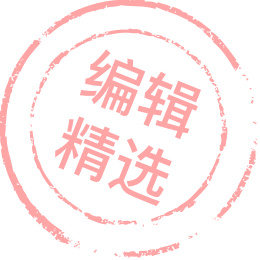
【亚米公开课|直播内容(九)】 防晒美白(物理、化学防晒)
【亚米公开课|直播内容(九)】
第三课之 防晒美白(物理、化学防晒)
------------------
「这几天我们做了什么???」
之前我们在晒单中分享了【言安堂】大量的护肤干货
9月26日-9月29日【言安堂】在 亚米护肤公开课 微信群中带来
每日1小时 最科学的护肤基础知识
干货满满
亚米小编将陆续整理直播的内容分享给来不及听直播的各位~
---正题来了---
了解了这些数值之后,怎么样进一步选择适合自己皮肤的防晒产品呢?这里我们来讲下防晒剂,也是防晒产品最重要的组成部分。
防晒剂一般分成两类:物理防晒和化学防晒。

物理防晒的防晒剂一般有两种,即钛白粉(二氧化钛)和氧化锌。首先它们是两种矿物,不会溶解而是以颗粒的形式悬浮在防晒霜里。
钛白粉和氧化锌对于紫外线的作用不是反弹而是吸收。它们有坚固的矿物结构,吸收了紫外线之后,自己不会受到任何破坏,而把能量转换以电磁波无害的形式释放出去。
化学防晒剂则是杀敌一千自损八百的情况。它在吸收紫外线转换释放后,自己也会发生降解。
所以,物理防晒相对化学防晒有以下的好处。
第一,物理防晒剂很稳定,这在减少补涂方面有优势。第二,物理防晒剂比较温和,它是不溶解的状态,所以不太会穿透我们的皮肤屏障进入到身体造成刺激。与此同时它带来的缺点是什么呢?比如钛白粉可以大量反射可见光,所以看起来非常白(它最大规模的使用主要在于我们刷墙的涂料)。所以使用这类物理防晒的产品,脸就显得非常白而看起来非常不自然。
此外,物理防晒剂容易搓泥,因为含有粉末、固体。还有,它的抗水性相对较差一点,容易被冲得不均匀。如果出汗就容易形成一道一道变得不均匀。所以,使用这类产品大量出汗后需要补涂。
化学防晒剂基本是物理防晒的反面。它们大多是油性或水溶性,所以不会起白也不会搓泥。由于多数是油性的,它抗水性也会比较好。
缺点就是化学防晒剂吸收了紫外线后会光降解,不稳定。所以,一段时间后就需要补涂,否则不能起到防晒的作用。一般的看法是两个小时补涂一次。
一些化学防晒剂分子较大便不容易穿过皮肤,而还有一些小分子的化学防晒剂就很容易进入皮肤,对皮肤造成刺激。
说完物理和化学防晒剂的优缺点,下面我们具体来看分别的各种防晒剂。

先看物理防晒剂,钛白粉(二氧化钛)和氧化锌。上图为两种物质对紫外线的吸收度。二氧化钛吸收的主要是UVB,对UVB的防御能力较强。氧化锌相对来说对UVA的吸收较好,同时对UVB也有一定的吸收,较为平均。所以,一个纯物理防晒产品假如只用二氧化钛,那么它的PA就不会很高,防晒黑能力不佳。
有人会问,素颜霜或BB霜的配方成分里也有二氧化钛,那是不是用它们防晒就足够了呢?
答案是否定的。
理论上,如果你把颗粒做到纳米级(可见光是可以绕过去的),会显现透明的状态。所以,对于防晒产品里使用的钛白粉,一般会使用比较小的颗粒,且我们希望颗粒越小越好,这样的防晒霜才不会出现起白的状况。
素颜霜作用是为了让你的皮肤变白。BB霜虽然有不同颜色,但也会先加入钛白粉(相当于需要在白纸上作画)。它们其中的钛白粉粒径很大,因为越大越容易起到遮盖和白的作用。而其中的钛白粉含量其实非常低。如果使用的产品中含有1%的大颗粒钛白粉便已经能让脸非常白。而要做防晒来说我们可能要把钛白粉的含量加到5%-6%,甚至10%-20%。所以,素颜霜和BB霜中所含钛白粉的量对于防晒来说是不够的。



这里给大家看两个例子,珂润的敏感肌用的防晒和安耐晒的小蓝瓶(安耐晒的儿童防晒)。敏感肌和儿童防晒对温和性的要求较大,所以一般选用纯物理防晒。这里就可以看到这两款所含的防晒剂只有二氧化钛和氧化锌两种。当然也有人吐槽这两款涂在脸上起白太严重,这里就是给大家看个例子。
接下来要特别讲一讲大家现在更为常用的化学防晒剂。
物理防晒剂的选择较少,而且比较难做到较高的SPF值。而化学防晒剂可以做到SPF50甚至SPF100。
那么怎么选择适合我们皮肤的化学防晒剂呢?这里主要分为防UVA和防UVB两种。
防UVB的化学防晒剂比较常见,稳定性也比较好。防UVA的防晒剂通常光不太稳定。最早用的是图中的丁基甲氧基二苯甲酰基甲烷通常我们叫阿伏苯宗Avobenzone,它是以前常见的防UVA的防晒剂。

那时候对于防UVA的防晒剂选择很少。阿伏苯宗吸收UVA的能力很强,但它最大的毛病是非常不稳定,也就是我们说的见光死。它吸收UVA但是很快就会被降解。为了维持它的稳定性,产品里用得最多的是奥克利林和二本酮-3,这两个成分可以帮助阿伏苯宗不那么快被降解掉。所以,大家要注意的是,如果产品里只含有阿伏苯宗而不含帮助它稳定的成分,这说明这个防晒产品需要经常补涂。
还有一个要小心的是,另外有个比较常用的UVB防晒剂——甲氧基肉桂酸乙基己酯。这个成分与阿伏苯宗有促进分解的作用。所以,如果有产品同时使用这两种成分就要格外小心,它的降解速度会非常快而需要频繁补涂。当然,产品设计也会尽量避免这两种成分同时出现。
这里再讲到刚才为什么更加推荐欧洲的和亚洲的防晒剂。
我们可以看到,图中红线的左边是美国FDA批准的较老牌的成分,右边是较新的未批准的成分(美国认为防晒剂是药物,所以比较慎重)。颜色的区分代表成分对皮肤的刺激程度。红色代表非常刺激,黄色代表刺激性有待考量,绿色代表较为温和。
这里特别强调,二苯酮-3被很多研究公认为目前防晒剂里最容易导致接触性皮炎的成分。建议大家在选择防晒剂产品的时候要尽量避免选择含这个成分的产品。而由于美国防晒产品能选择的成分只有几种,为了能有更高的SPF值,选择使用二本酮-3是很常见的。
而在欧洲和中国其实现在已经尽量避免用这个防晒剂了。
然后关于其它的几个黄色的成分,比如阿伏苯宗,它本身对皮肤很温和。但分解以后的分解产物,有可能对皮肤造成刺激。奥克利林也同样很温和,但有研究表明,它分解后会释放氧自由基,也有可能会刺激皮肤。
甲氧基肉桂酸乙基己酯的问题是其渗透性非常强,有研究表明它会影响到人体的激素。不过这个研究是在动物身上的实验,而且用了非常高的剂量。所以,关于甲氧基肉桂酸乙基己酯这个原料,各国政府都认为它是安全的。网上有观点认为孕妇要注意避免含有这个原料的防晒剂,怕影响到胎儿,其根源也是来自这个实验。如果有这个担心,那你可以避免,但其实这个原料使用得非常普遍。
图的右边都是相对较温和,也是现在我们用得更多的防晒剂。它们对皮肤比较温和,对光也比较稳定。但这些在美国一律没有被批准。其中,对苯二亚甲基二樟脑磺酸和甲酚曲唑三硅氧烷是欧莱雅的专利。也是专门用来稳定阿伏苯宗的。

防晒产品里除了防晒剂还有其他的成分。
防晒剂(特别是化学防晒剂)里含有很多油,肤感不佳,较为油腻。所以为了调节产品的肤感,产品里会加入其他的成分。其中产品最喜欢加的就是酒精(特别是日本的防晒产品)。油性皮肤的朋友相对皮肤屏障较好,可以使用含酒精的产品。如果是干皮,尽量还是选择无酒精的的化学防晒。敏感皮肤则最好使用纯物理防晒。如果化学防晒产品只含有图中绿色的成分,也可以考虑使用。
(未完待续...)
------------------
【听说,点赞只需0.01s】
动一动手指,为直播内容点赞。
10月20日,言安堂将从所有点赞的朋友中抽出一名获得
「言安堂的专属护肤报告」

